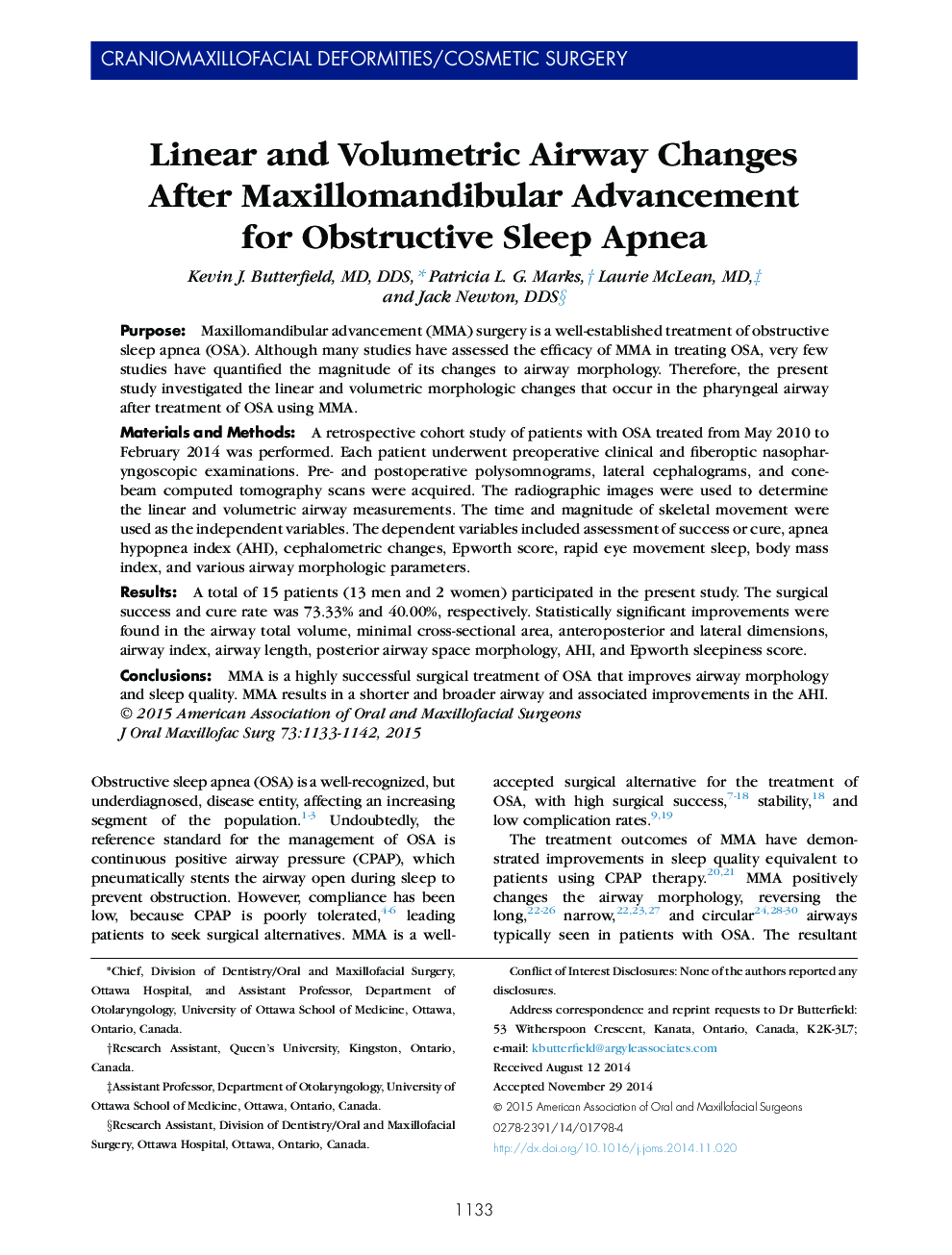| Article ID | Journal | Published Year | Pages | File Type |
|---|---|---|---|---|
| 3155841 | Journal of Oral and Maxillofacial Surgery | 2015 | 10 Pages |
PurposeMaxillomandibular advancement (MMA) surgery is a well-established treatment of obstructive sleep apnea (OSA). Although many studies have assessed the efficacy of MMA in treating OSA, very few studies have quantified the magnitude of its changes to airway morphology. Therefore, the present study investigated the linear and volumetric morphologic changes that occur in the pharyngeal airway after treatment of OSA using MMA.Materials and MethodsA retrospective cohort study of patients with OSA treated from May 2010 to February 2014 was performed. Each patient underwent preoperative clinical and fiberoptic nasopharyngoscopic examinations. Pre- and postoperative polysomnograms, lateral cephalograms, and cone-beam computed tomography scans were acquired. The radiographic images were used to determine the linear and volumetric airway measurements. The time and magnitude of skeletal movement were used as the independent variables. The dependent variables included assessment of success or cure, apnea hypopnea index (AHI), cephalometric changes, Epworth score, rapid eye movement sleep, body mass index, and various airway morphologic parameters.ResultsA total of 15 patients (13 men and 2 women) participated in the present study. The surgical success and cure rate was 73.33% and 40.00%, respectively. Statistically significant improvements were found in the airway total volume, minimal cross-sectional area, anteroposterior and lateral dimensions, airway index, airway length, posterior airway space morphology, AHI, and Epworth sleepiness score.ConclusionsMMA is a highly successful surgical treatment of OSA that improves airway morphology and sleep quality. MMA results in a shorter and broader airway and associated improvements in the AHI.
